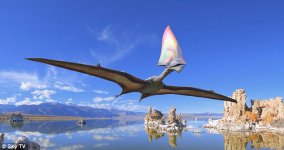Guys, I've got a question. It is not a trick question.
Assume that you have a tailess flying wing with a span anout 36 feet and an aspect ratio about 17. Gross weight is about 330 pounds. There are no ailerons or flaps, no rudder, no elevators. The wing is a visco-elastic membrane supported by an articulated leading edge spar, but without a trailing edge tendon. The wing is tension battened, not compression battened, and you can control camber by slightly increasing or decreasing local surface area of spots about the size of your hand, thereby allowing the pressure jump between the upper and lower wing surface to locally modulate the shape of the camberline. The wing is not bat-like.
The question is, how do you provide substantial yaw command authority (on the loose order of 90 ft-lbs) without simultaneously creating pitch or rolling moments. Again, this is not a trick question.
Assume that you have a tailess flying wing with a span anout 36 feet and an aspect ratio about 17. Gross weight is about 330 pounds. There are no ailerons or flaps, no rudder, no elevators. The wing is a visco-elastic membrane supported by an articulated leading edge spar, but without a trailing edge tendon. The wing is tension battened, not compression battened, and you can control camber by slightly increasing or decreasing local surface area of spots about the size of your hand, thereby allowing the pressure jump between the upper and lower wing surface to locally modulate the shape of the camberline. The wing is not bat-like.
The question is, how do you provide substantial yaw command authority (on the loose order of 90 ft-lbs) without simultaneously creating pitch or rolling moments. Again, this is not a trick question.








